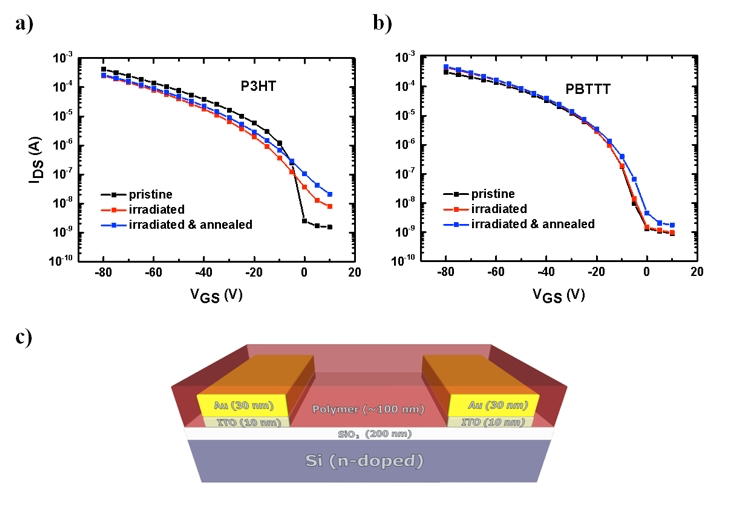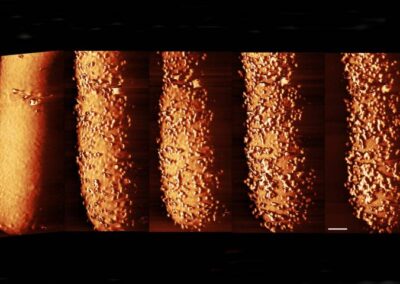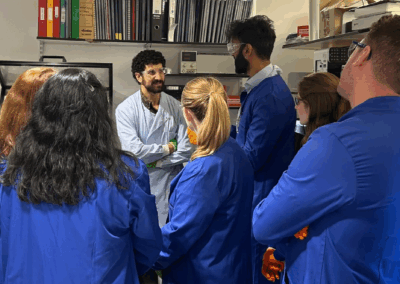Avionics and space applications as well as smaller scale devices, such as weather balloons, mini-satellites and high-flying drones, may benefit greatly from the lightness and flexibility of organic-based devices because of the vital importance of minimising payload (size and mass). For these reasons, the performance of such a promising class of devices needs to be tested carefully under extreme conditions, such as a harsh-radiation environment.
Scientists at the London Centre for Nanotechnology, in the research group of Professor Franco Cacialli, in collaboration with Dr Garcia Sakai at ISIS – Neutron and Muon Source, have conducted the first study on the neutron radiation hardening of organic-based devices, which has proven to be a crucial step in assessing material damage following neutron-nucleus collisions. They employed the highly energetic neutron flux available at the ISIS facility as a tool to mimic years of cosmic rays irradiation on organic electronics in just a few hours.
The study was published has an open access article in Nature Scientific Reports.
The scientists focused on two benchmark semiconducting polymers, namelyFigure poly(3-hexylthiophene), P3HT, and poly(2,5-bis(3-hexadecylthiophen-2-yl)thieno[3,2 b]thiophene), PBTTT, observing that the functionality of PBTTT-based field-effect transistors is almost unaltered after irradiation, whereas the characteristics of P3HT-based devices worsen upon neutron exposure.

Figure: Field effect transistor characteristics (current intensity vs. gate voltage) of (a) P3HT and (b) PBTTT before, after neutron irradiation and post-irradiation thermal treatment, showing that the devices incorporating PBTTT as active material feature a higher irradiation tolerance than P3HT. A sketch of the organic field-effect transistor’s architecture (c)
The superior tolerance of PBTTT, which they attribute to its higher crystalline order, is also confirmed by spectroscopic investigations.
These results suggest a rationale for designing new radiation tolerant polymer, paving the way for the effective utilisation of such class of semiconductors in space and avionics applications, and more generally for improving the reliability of this class of materials.
Related links:-


